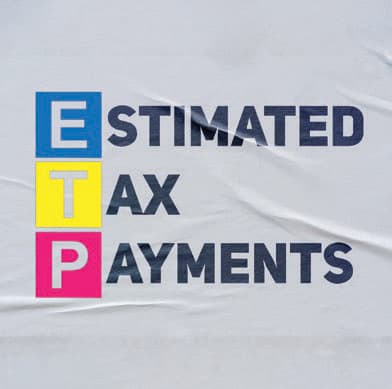Use the tax code to make business losses less painful

Whether you’re operating a new company or an established business, losses can happen. The federal tax code may help soften the blow by allowing businesses to apply losses to offset taxable income in future years, subject to certain limitations.
Qualifying for a deduction
The net operating loss (NOL) deduction addresses the tax inequities that can exist between businesses with stable income and those with fluctuating income. It essentially lets the latter average out their income and losses over the years and pay tax accordingly.
Eligibility for the NOL deduction depends on having deductions for the tax year that exceed your income. The loss generally must be caused by deductions related to your:
- Business (Schedules C and F losses, or Schedule K-1 losses from partnerships or S corporations),
- Casualty and theft losses from a federally declared disaster, or
- Rental property (Schedule E).
The following generally aren’t part of the NOL determination:
- Capital losses that exceed capital gains,
- The exclusion for gains from the sale or exchange of qualified small business stock,
- Nonbusiness deductions that exceed nonbusiness income,
- The NOL deduction itself, and
- The Section 199A qualified business income deduction.
Individuals and C corporations are eligible to claim the NOL deduction. Partnerships and S corporations generally aren’t eligible, but partners and shareholders can calculate individual NOLs using their separate shares of business income and deductions.
Limitations
Prior to the Tax Cuts and Jobs Act (TCJA), taxpayers could carry back NOLs for two years and carry forward losses 20 years. They also could apply NOLs against 100% of their taxable income.
The TCJA limits NOL deductions to 80% of taxable income for the year and eliminates the carryback of NOLs (except for certain farming losses). However, it does allow NOLs to be carried forward indefinitely.
If your NOL carryforward is more than your taxable income for the year you carry it to, you may have an NOL carryover. That’s the excess of the NOL deduction over your modified taxable income for the carryforward year. If your NOL deduction includes multiple NOLs, you must apply them against your modified taxable income in the same order you incurred them, beginning with the earliest.
Planning ahead
The tax rules regarding business losses are complex, especially the interaction between NOLs and other potential tax breaks. We can help you chart the best course forward.
A limit on excess business losses
The Tax Cuts and Jobs Act (TCJA) established an “excess business loss” limitation, effective beginning in 2021. For partnerships or S corporations, this limitation is applied at the partner or shareholder level, after applying the outside basis, at-risk and passive activity loss limitations.
Under the rule, noncorporate taxpayers’ business losses can offset only business-related income or gain, plus an inflation-adjusted threshold. For 2023, that threshold is $289,000, or $578,000 if married filing jointly. Remaining losses are treated as a net operating loss (NOL) carryforward to the next tax year. That is, you can’t fully deduct them because they become subject to the 80% income limitation on NOLs, reducing their tax value.
Important: Under the Inflation Reduction Act, the excess business loss limitation applies to tax years beginning before January 1, 2029. Under the TCJA, it had been scheduled to expire after December 31, 2026.
Education benefits help attract, retain and motivate your employees

One popular fringe benefit that an employer can offer is an education assistance program that allows employees to continue learning, and perhaps earn a degree, with financial help from the employer. Your business can attract, retain and motivate employees by providing education benefits that enable team members to improve their skills and gain additional knowledge. An employee can receive, on a tax-free basis, up to $5,250 each year under a “qualified educational assistance program.”
For this purpose, “education” means any form of instruction or training that improves or develops an individual’s capabilities. It doesn’t matter if it’s job-related or part of a degree program. This includes employer-provided education assistance for graduate-level courses, as well as courses normally taken by individuals pursuing programs leading to a business, medical, law, or other advanced academic or professional degree.
More requirements
The educational assistance must be provided under a separate written plan that’s publicized to your employees and meets specific conditions. A plan can’t discriminate in favor of highly compensated employees.
In addition, not more than 5% of the amounts paid or incurred by the employer for educational assistance during the year may be provided for individuals (including their spouses or dependents) who own 5% or more of the business.
No deduction or credit can be claimed by an employee for any amount excluded from the employee’s income as an education assistance benefit.
Job-related education
If you pay more than $5,250 for educational benefits for an employee during the year, that amount must be included in the employee’s wages and he or she must generally pay tax on the amount over $5,250. However, in addition to, or instead of applying, the $5,250 exclusion, an employer can satisfy an employee’s educational expenses on a nontaxable basis if the educational assistance is job-related. To qualify as job-related, the educational assistance must:
- Maintain or improve skills required for the employee’s then-current job, or
- Comply with certain express employer-imposed conditions for continued employment.
“Job-related” employer educational assistance isn’t subject to a dollar limit. To be job-related, the education can’t qualify the employee to meet the minimum educational requirements for his or her employment or other trade or business.
Educational assistance benefits meeting the above “job-related” rules are excludable from employees’ income as working condition fringe benefits.
Assistance with student loans
Some employers also offer student loan repayment assistance as a recruitment and retention tool. Starting in 2024, employers can help more. Under the SECURE 2.0 law, an employer will be able to make matching contributions to 401(k) and certain other retirement plans with respect to “qualified student loan payments.” The result of this provision is that employees who can’t afford to save money for retirement because they’re repaying student loan debt can still receive matching contributions from their employers.
Contact us to learn more about setting up an education assistance or student loan repayment plan at your business.
Consider the flexibility of a self-directed IRA
Traditional and Roth IRAs can be relatively “safe” retirement-saving vehicles, though, depending on what they’re invested in, they limit your investment choices. For more flexibility in investment choices (but also more risk) another option is a self-directed IRA.
Gaining more control
A self-directed IRA is simply an IRA that provides greater control over investment decisions. Traditional and Roth IRAs typically offer a selection of stocks, bonds and mutual funds. Self-directed IRAs (available at certain financial institutions) offer greater diversification and potentially higher returns by permitting you to select virtually any type of investment, including real estate, closely held stock, limited liability company and partnership interests, loans, precious metals, and commodities (such as lumber, oil and gas).
A self-directed IRA can be a traditional or Roth IRA, a Simplified Employee Pension plan, or a Savings Incentive Match Plan for Employees. Other possibilities include a self-directed individual 401(k) plan, Health Savings Account or Coverdell Education Savings Account. The tax-free growth these accounts offer makes them powerful estate planning tools.
Navigating tax traps
To avoid pitfalls that can lead to unwanted tax consequences, exercise caution when using self-directed IRAs. The most dangerous traps are the prohibited transaction rules. These rules are designed to limit dealings between an IRA and “disqualified persons,” including account holders, certain members of their families, businesses controlled by account holders or their families, and certain IRA advisors or service providers.
Among other things, disqualified persons can’t sell property or lend money to the IRA, buy property from the IRA, provide goods or services to the IRA, guarantee a loan to the IRA, pledge IRA assets as security for a loan, receive compensation from the IRA, or personally use IRA assets.
The penalty for engaging in a prohibited transaction is severe: The IRA is disqualified and its assets are deemed to have been distributed on the first day of the year in which the transaction took place, subject to income taxes and potentially, to penalties. This makes it very difficult to manage a business, real estate or other investments held in a self-directed IRA. Unless you’re prepared to accept a purely passive role with respect to the IRA’s assets, this strategy isn’t for you.
Considering the option
If you’d like to invest in assets such as precious metals, energy or other alternative investments, a self-directed IRA may be worth considering. Contact our firm to discuss this further.
3 strategies for handling estimated tax payments

Many individuals today are self-employed or generate income from interest, rent, dividends and other sources. If you’re in this situation, you could be risking penalties if you don’t pay enough taxes during the year through estimated tax payments and withholding.
Note: The due date for the final estimated payment for 2023 is January 16, 2024.
Here are three strategies to help you pay enough taxes and avoid underpayment penalties:
- Know the minimum payment rules. Your estimated payments and withholding must equal at least:
- 90% of your tax liability for the year,
- 110% of your tax for the previous year, or
- 100% of your tax for the previous year if your adjusted gross income for that year was $150,000 or less ($75,000 or less if married filing separately).
- Use the annualized income installment method, if eligible. This method often benefits taxpayers who have large variability in income by month due to bonuses, investment gains and losses, or seasonal income — especially if it’s skewed toward year end. Annualizing calculates the tax due based on factors occurring through each quarterly estimated tax period.
- Estimate your tax liability and increase withholding if possible. If you find you’ve underpaid your 2023 taxes, consider having the tax shortfall withheld from your salary or year-end bonus by December 31. Withholding is considered to have been paid ratably throughout the year, so this could allow you to avoid penalties, whereas trying to make up the difference with a larger quarterly tax payment could trigger penalties.
Estimated tax payments can be tricky. Please contact us for help.
Tax Calendar
December 15 – Calendar-year corporations must pay fourth-quarter 2023 estimated tax payments. In addition:
- If the monthly deposit rule applies, employers must deposit the tax for payments in November for Social Security, Medicare, withheld income tax and nonpayroll withholding.
About Batley CPA
Batley CPA, LLC is a full-service CPA firm providing tax, accounting, payroll and advisory services to businesses and individuals throughout Green Bay and the Fox Cities. Batley CPA regularly provides clients with best practices and strategies to maximize cash flow, profit, reduce taxes, manage costs and risk, and bring meaning to financial and operational data. The company has offices in Appleton, Neenah and Green Bay.


